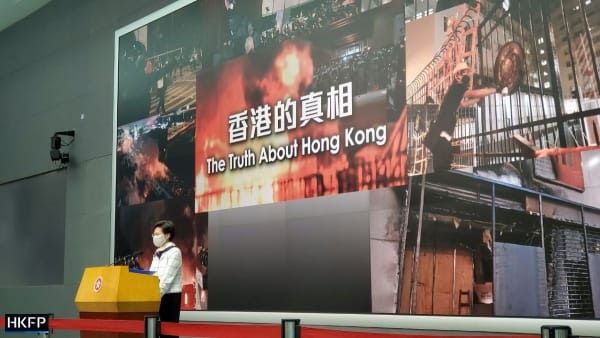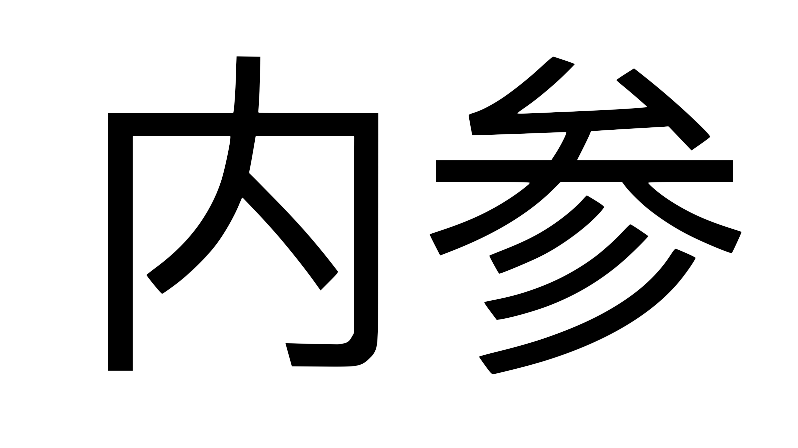Brief #24: Politburo, AU-CN trade, space ambitions, Hong Kong
China Neican is a weekly column of the China Story blog.
1. Politburo Meeting
As we know, the Chinese Communist Party is a big fan of using numbers as a mnemonic device to represent different ideas. Famous examples include the Deng’s Four Cardinal Principles and Jiang’s Three Represents. (People tend to overlook Hua’s Two Whatevers.) Under Xi, there are the Four Comprehensives and the Four Malfeasances.
The recent Politburo Meeting readout also contains some numbers. Let’s have a look at them.
Four Consciousness (四个意识), Four Matters of Confidence (四个自信) and Two Upholds (两个维护) — these usually appear together.
Four Consciousness refers to the consciousness of:
maintain political integrity (政治意识)
think in big-picture terms (大局意识)
follow the leadership core (核心意识)
keep in alignment with the leadership core (看齐意识)
Four Matters of Confidence refers to the confidence in:
path (道路自信)
theory (理论自信)
system (制度自信)
culture (文化自信)
Two Upholds refers to resolutely upholding:
General Secretary Xi Jinping’s core position on the Party Central Committee and in the Party as a whole (坚决维护习近平总书记党中央的核心、全党的核心地位)
the Party Central Committee’s authority and its centralised, unified leadership (坚决维护党中央权威和集中统一领导)
The Six Key Areas (or Six Stabilities) (六稳) and Six Priorities (六保) are slogans used for pandemic recovery.
Six Key Areas refer to stable:
employment (稳就业)
finance (稳金融)
foreign trade (稳外贸)
foreign investment (稳外资)
investment (稳投资)
expectations (稳预期)
Six Priorities, which are designed to ensure stability in the Six Key Areas, are:
employment (保居民就业)
people’s livelihood (保基本民生)
the development of market entities (保市场主体)
food and energy security (保粮食能源安全)
stable operation of the industrial and supply chains (保产业链供应链稳定)
smooth functioning at the community level (保基层运转“六保”任务)
From these handy mnemonics, you can see the CCP’s priorities in party-building and in pandemic recovery.
2. Australia-China trade
Following the Chinese Ambassador’s references to Australia’s beef and wine trade earlier this month, new developments in the Australia-China trade relationship emerged this week.
China is proposing high tariffs on Australian barley, which if proceeds, would effectively end the barley trade between the two countries. The barley tariff proposal has come after an 18-month anti-dumping investigation by China on Australian barley. The dumping claims refer to Australia’s fuel rebate and drought support measures. The Australian Government denied that there are trade-distorting subsidies. (Note that Australia is actually one of the biggest users of anti-dumping measures, including against China.)
Days later, China suspended imports from four Australian abattoirs, representing 35 per cent of the bilateral beef trade. The justification was on technical health certification issues.
At the same time, China is planning to buy more barley from the United States and beef from Russia.
These two trade developments have not been linked officially by the Chinese Government to the recent difficulties in the bilateral relationship, stemming from Australia’s call for an independent inquiry. However, their timing, coupled with the Ambassador’s remarks earlier this month, is highly suggestive that a link exists.
This is a frequently-used tactic by the Chinese Government. It provides China with deniability that it is using trade as a tool for economic coercion. From China’s perspective, it needs to send a message to the other side that its economic interest is at stake for going against China’s interest. At the same time, it must be delivered with a certain degree of ambiguity, so that it can deny it is blatantly using economic tools for a political end.
We have noted in our submission to a Parliamentary Inquiry that Australia’s agricultural industry is at risk of economic coercion, due to its political influence in the country as well as the existence of alternative suppliers in the world.
3. China’s space ambitions
China made another big step forward towards its “space dream” last week with the maiden flight of the new large carrier rocket Long March-5B, which will be mainly used for launching modules of its new space station. All together 12 missions are planned, with construction scheduled to finish in 2022.
Space is seen as important for China’s strategic interests for a whole range of reasons. China’s 2016 white paper on space activities states that China’s space program aims to provide “strong support for the realisation of the Chinese Dream of the renewal of the Chinese nation”.
China’s space program is ambitious, including orbital, lunar and deep-space activities for the next two decades. Closer to Earth, China is sending satellites up in the sky rapidly to build satellite constellations for navigation and global positioning, communications, observation, remote sensing, and imagery. Looking to the Moon, China plans to send probes to explore the lunar surface before launching a manned lunar mission and possibly building a lunar outpost in the 2030s. Plans are also under way for deep space exploration missions to Mars, Jupiter, and asteroids from the early 2020s.
The economic and technological imperatives of space are fairly straightforward. Space technology enables modern economies and societies. Beyond the immediate benefits, Beijing is also eyeing commercial opportunities in space, including resource extraction on the Moon (helium-3 for nuclear fusion, for example) and creating a ‘space economic zone’ within the Moon's orbit.
Space is also important for China’s national security. China’s 2019 defence white paper states that “space is a critical domain in international strategic competition [that] provides strategic assurance for national and social development”. For the People’s Liberation Army, space and cyberspace are new ‘strategic frontiers’ 战略边疆 that are critical to China’s hard power. The establishment of the Chinese military’s information warfare force, the Strategic Support Force 战略支援部队, is a testament to that.
China’s rapid rise as a major space power and its grand ambitions in space are intimately tied to terrestrial geopolitics. In the words of one recent report:
Questions regarding China’s capabilities and intentions in space are indubitably linked to larger geostrategic questions about China’s role in the world. Buoyed by recent successes and impressive advancements in space technology, China has emerged as a leading player in space...China’s approach to modernizing its space presence includes an emphasis on military-civil fusion (MCF) and the development of dual-use technology that buoys both military and economic growth.
There is no doubt that US-China space competition is heating up, even though we are not yet at the point of space race as we saw during the Cold War between the US and USSR. Although in the words of US Vice-president Mike Pence, “Make no mistake about it: we’re in a space race today, just as we were in the 1960s [with the Soviet Union], and the stakes are even higher”.
4. Hong Kong
This week, Hong Kong Government’s Education Bureau decided to scrap a question on Sino-Japan relations in the history paper of this year’s Diploma of Secondary Education (DSE) exam, claiming it was “leading and biased”. The history exam took place on Thursday. The question asked students whether they agree with the statement “Japan did more good than harm to China in the period of 1900-45” with reference to two sources provided.
Chinese state media, including Ta Kung Pao, Wen Wei Po and Global Times, have lambasted the question saying that it encourage students to become ‘traitors’ 汉奸 while China’s foreign ministry office in HK used an unfortunate and somewhat revealing analogy: “Hong Kong's education sector must not become a chicken coop without a roof”.
Since the protests started last year, we have seen a consistent line from Beijing that marks Hong Kong as a source of political pollution, and an entry point for nefarious foreign forces. There is no acknowledgement of genuine grievances of Hong Kongers on the erosion of human rights and rule of law in Hong Kong.
In light of the protests last year, there is little doubt that Beijing will push hard on ‘patriotic education’ as means of social control in Hong Kong.
This week also saw Hong Kong’s Independent Police Complaints Council releasing its 999-page report on police behaviour during last year’s protests. It cleared police of misconduct, concluding that the force generally acted within guidelines, but there was “room for improvement”. Critics argue that the report is not independent, and whitewashes police brutality, and that the body lacks investigative power to properly conduct investigation.

Source: Hong Kong Free Press
Remember that Police brutality became the main grievance of protesters after the extradition bill was shelved?!
As human rights, media freedom, rule of law, and Hong Kong’s autonomy continue to come under pressure from Beijing and its local proxies, we should expect to see continued, and perhaps intensified, resistance.
This week on China Story:
- Nathan Attrill, Securing China’s food supply post-COVID-19: ‘Self-reliance’ returns to the northeast provinces
Foreign food exporters have long benefitted from a perception among Chinese consumers that some domestic foodstuffs do not meet sufficient safety and quality standards. But in the wake of COVID-19, better securing the domestic supply chains of China’s critical resources – including food – has now become a top priority for Beijing. One region in China, not known for its agricultural output, has already begun a transformation into becoming the new ‘breadbasket of Asia’: the northeast. Success in this region could present a serious challenge to exporter countries like Australia if China is able to replace its food exports with increased local production. - Lakha Kunbzang, Epidemic in a Tibetan city: a reflection
Cities are sites of aspirations, illusions, and nightmares for Tibetans. During the COVID-19 epidemic, urban centres have become nightmarish spaces of fear and anxiety for many Tibetans. The city of Zö, on the northeast Tibetan Plateau, illustrates how lockdowns have affected Tibetans and how they have reacted to new government restrictions. Online information and control, as a relatively new means of governance, has played an important role in shaping and enforcing the norms of behaviour of residents of Tibetan cities in China.
- Ari Heinrich, Before coronavirus, China was falsely blamed for spreading smallpox. Racism played a role then, too
The outbreak of COVID-19 has coincided with a dramatic escalation in racially motivated incidents towards people of Asian descent around the world. If the story of smallpox reveals nothing else, it’s that rhetoric remains powerful across history, its afterlife having consequences for real people and real lives. - Rowan Callick, Australia’s top China journalist expelled By Beijing
The doyen of Australian journalists covering China, the New York Times’ correspondent Chris Buckley — a doctor of philosophy from the Australian National University — has just been booted out of the People’s Republic. Married with a student daughter, he returned early this week to Sydney.
